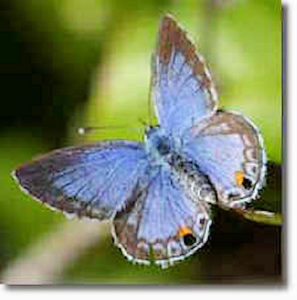Do you love to watch wildlife in your yard, especially birds and Florida Keys Butterflies? Do you often wonder if your home’s landscape attracts them? If your landscape doesn’t have a mix of native trees and shrubs, it’s likely you’re not seeing as many varieties of Florida Keys butterflies as you could be. With a little bit of homework, you can add plants to your landscape to attract those butterflies you love to see. Where do you start? First, identify and make a list of the plants you have in your yard that seem to attract the wildlife you like to see, such as trees, bushes, vines and herbaceous plants.

If you’re unsure of the plant species, there are several sources that can aid with identification: University of Florida/ Institute of Food and Agricultural Sciences Extension, regionalconservation.org, and many reference books. Next, you’ll need to do some research on native plants that attract Florida Keys Butterflies and whether those butterflies are migratory (seasonal) or year-round. Butterflies are attracted to some plants for food, while other plants are hosts for their larvae. This information is available on websites such as fnps.org, in reference books and at lectures given by local community groups and state parks, including Earth Day events.
Once you’ve completed your research, you’re ready to plan where to add your butterfly plants. Take into consideration the amount of sun, shade and water the plants require. In some areas, salt tolerance is also a factor in where to plant. A good example of adding plants to an existing landscape is the butterfly garden at John Pennekamp Coral Reef State Park. The garden was planted exclusively with butterfly-attracting plants in an existing area with mature trees. It contains more than 50 species of plants, ranging from climbing vines such as balloonvine and skyblue clustervine, to trees such as crabwood, torchwood and Guiana plum, to bushes such as jack-in-the-bush, wild coffee and Bahama senna, to flowering herbaceous plants such as marsh fleabane, butterfly sage and bladdermallow. Just over a year old, the garden is a great place to visit to get ideas for your landscape and to see how quickly your Florida Keys Butterfly plants will fill in.
 Your next question is “Where can I find these native plants?” Some of the plant nurseries in the Keys stock native plants; however, you may have to ask for them. You can also attend Native Plant Day at John Pennekamp Coral Reef State Park from 9 a.m. until 1 p.m. Saturday, April 1. There will be a lecture, “Restoring Paradise for Birds and Butterflies in Your Own Backyard,” and two guided butterfly garden tours. The native plant giveaway for Keys’ residents will include a variety of butterfly plants (while quantities last).
Your next question is “Where can I find these native plants?” Some of the plant nurseries in the Keys stock native plants; however, you may have to ask for them. You can also attend Native Plant Day at John Pennekamp Coral Reef State Park from 9 a.m. until 1 p.m. Saturday, April 1. There will be a lecture, “Restoring Paradise for Birds and Butterflies in Your Own Backyard,” and two guided butterfly garden tours. The native plant giveaway for Keys’ residents will include a variety of butterfly plants (while quantities last).
Plan a visit at floridastateparks.org. Use what you learn, and soon you’ll enjoy seeing the wildlife in your renovated landscape. Lonell Rice is a volunteer at Dagny Johnson Key Largo Hammock Botanical State Park.
BY LONELL RICE Special to the Free Press
